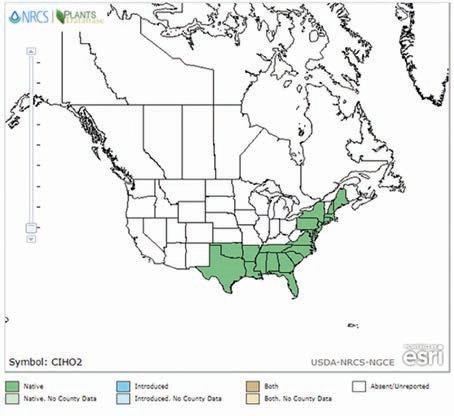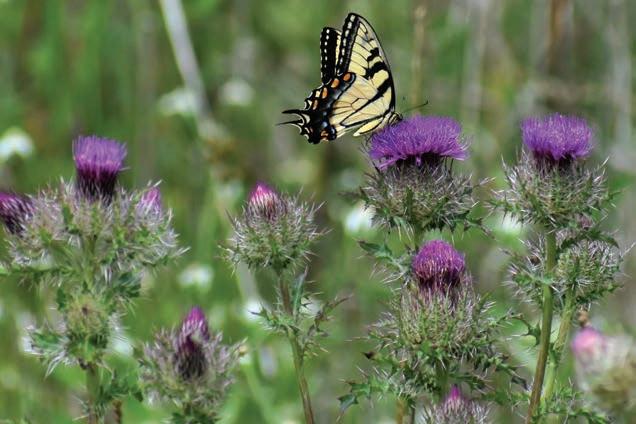
1 minute read
Understory Plant Spotlight
By Carol Denhof, The Longleaf Alliance Understory PLANT SPOTLIGHT Cirsium horridulum Michx. Yellow Thistle Aster Family – Asteraceae
Map showing distribution of yellow thistle. USDA PLANTS Database. Cirsium horridulum in flower with swallowtail butterfly. Photo by Sharleen Johnson.
Advertisement


Description Yellow thistle is a robust herbaceous, biennial member of the sunflower family. It grows as a densely packed rosette of spiny leaves. The spiny leaves can measure up to a foot in length and four inches in width. The flowering stem emerges from the center of the basal rosette and is covered in long hairs. The reddish-purple to pale yellow flower heads are arranged in racemes at the top of the flowering stem. Flowering occurs from March to June. The seeds, that mature in the summer, have long white bristles that aid in seed distribution.
Distribution & Habitat plantations and rights-of-way. It occurs in all parts of the longleaf range from Virginia south to Florida and west to Texas. Wildlife/Medicinal Uses Yellow thistle tends to get a bad name due to its prickly nature. However, it is an important wildlife plant. The seeds are an important food for many songbirds, including American Goldfinch and Carolina Chickadee. The flowers are also an early-season nectar source for pollinators like swallowtail butterflies.
Plant Availability This plant is not generally available commercially. However, the seed is easily wind dispersed, which makes it an early colonizer in disturbed and old field sites. It is also easy to propYellow thistle tends to inhabit ruderal sites such as young tree
agate from seed.
References Miller, J.H. and K.V. Miller. 2005. Forest Plants of the
Southeast and their Wildlife Uses. The University of
Georgia Press. Athens, GA. 454pp. USDA, NRCS. 2020. The PLANTS Database (http://plants.usda.gov, 6 November 2020). National
Plant Data Team, Greensboro, NC 27401-4901 USA.










